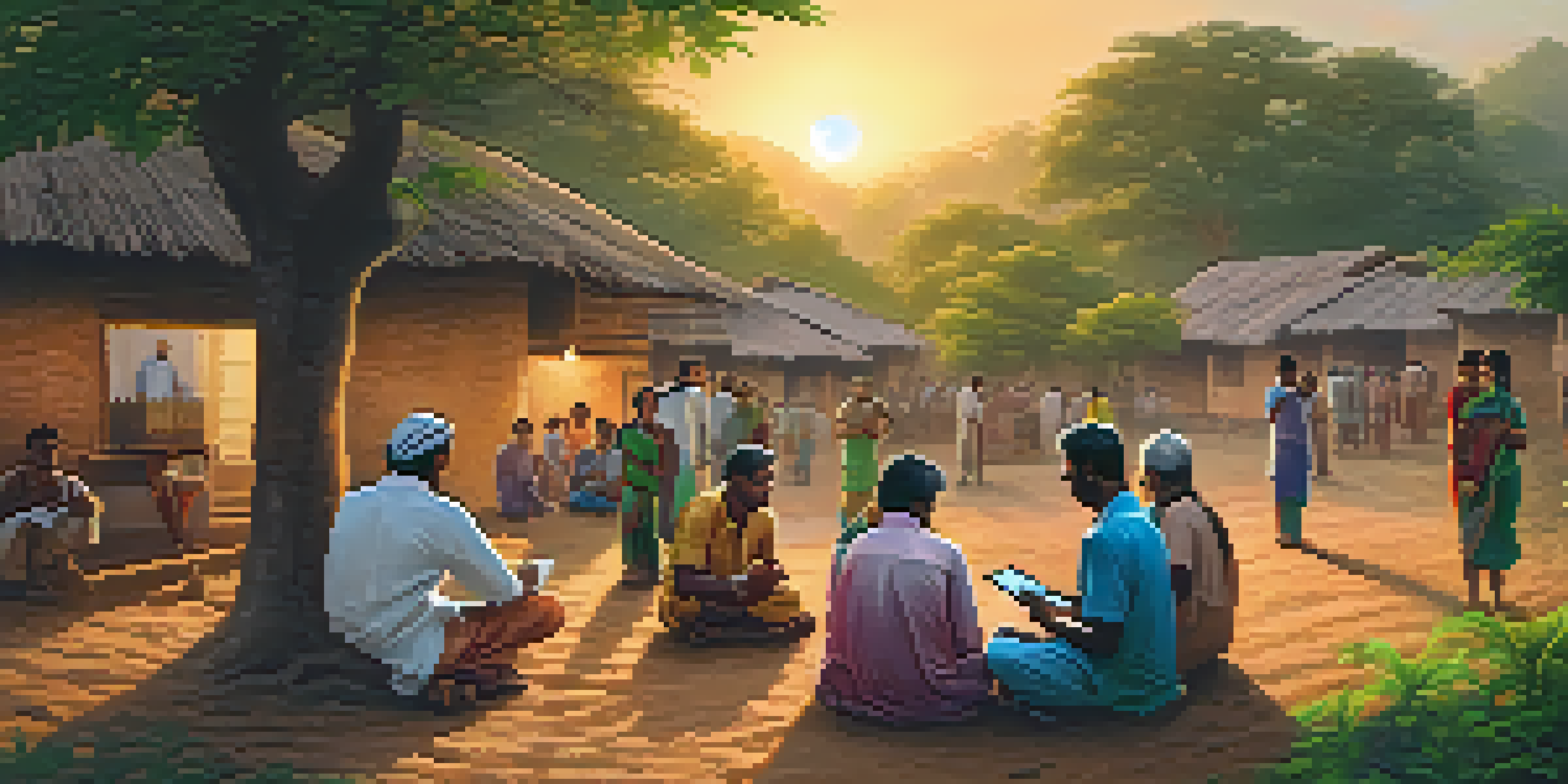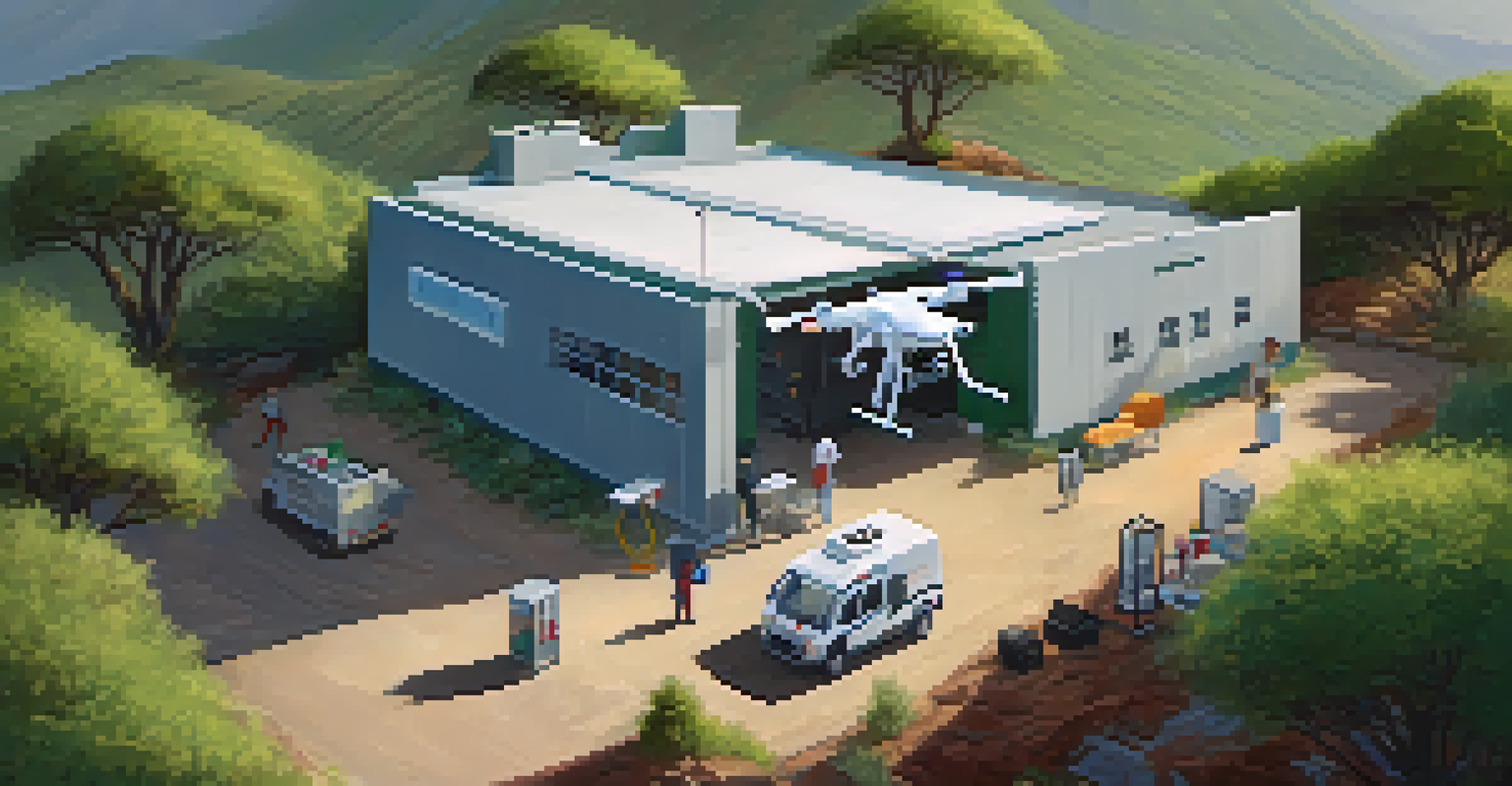Health Tech for Remote Areas: Innovations Bridging Gaps

Telemedicine: A Lifeline for Remote Communities
Telemedicine has emerged as a vital tool for healthcare access in remote areas. By connecting patients with medical professionals through video calls and online consultations, it eliminates the need for long travel times. This innovation is especially crucial for communities where healthcare facilities are sparse or non-existent.
The greatest medicine of all is to teach people how not to need it.
Consider the story of a rural village in India where residents used to travel hours for basic medical advice. Now, with telemedicine, they can consult doctors from the comfort of their homes, receiving timely care that was previously out of reach. This not only saves time but also reduces travel costs for families.
As telemedicine continues to evolve, it offers a promising solution to healthcare disparities, enabling patients in remote locations to receive quality care without the barriers of distance.
Mobile Health Applications: Empowering Patient Engagement
Mobile health apps are revolutionizing how patients in remote areas manage their health. These apps provide essential tools for tracking symptoms, medication reminders, and health education resources, all at users' fingertips. This accessibility empowers individuals to take control of their health, even in isolated regions.

For example, a farmer in a remote area can use a mobile app to monitor chronic conditions like diabetes or hypertension. With real-time data and reminders, he stays on top of his health, which can significantly improve his quality of life. These applications foster a sense of ownership over one's health, bridging the gap between patients and healthcare providers.
Telemedicine Expands Healthcare Access
Telemedicine connects remote patients with healthcare professionals, eliminating long travel times and improving access to care.
Moreover, mobile health apps often facilitate communication with healthcare professionals, allowing for timely advice and support, which is crucial in areas where traditional healthcare access is limited.
Wearable Technology: Monitoring Health on the Go
Wearable devices like smartwatches and fitness trackers are making health monitoring easier, even in remote areas. These gadgets can track vital signs, such as heart rate and activity levels, giving users valuable insights into their health. In places where regular check-ups are not feasible, wearables serve as a crucial tool for early detection of potential health issues.
Health is a human right, not a privilege to be purchased.
Imagine a woman living in a remote village who uses a smartwatch to monitor her heart rate during daily activities. If she notices irregularities, she can quickly consult a healthcare professional, potentially preventing serious health complications. This proactive approach is a game-changer for communities with limited access to medical facilities.
Additionally, some wearables can sync with mobile health apps, allowing users to share their health data with doctors, thus enhancing the overall care process and fostering better health outcomes.
Innovative Delivery Models: Reaching the Unreachable
Innovative healthcare delivery models are essential for providing services in remote areas. Drones, for instance, are being used to deliver medical supplies, vaccines, and even blood to hard-to-reach locations. This approach not only saves time but also ensures that essential health resources reach those in urgent need.
In Rwanda, drones have successfully transported blood supplies to remote clinics, significantly reducing the time it takes to deliver life-saving resources. This innovation has transformed how healthcare is delivered, proving that technology can overcome geographical barriers.
Wearables Enhance Health Monitoring
Wearable devices provide valuable health insights, enabling proactive management of health issues in remote communities.
By adopting such delivery models, healthcare providers can address the unique challenges faced by remote communities, ensuring that everyone has access to the care they deserve.
AI and Data Analytics: Enhancing Healthcare Decision-Making
Artificial Intelligence (AI) and data analytics are playing a pivotal role in improving healthcare in remote areas. By analyzing health data, AI can help identify trends and predict outbreaks, allowing for quicker responses to potential health crises. This technology enhances decision-making processes for healthcare providers in underserved regions.
For instance, AI algorithms can sift through patient data to identify common health issues in a specific area, enabling targeted health interventions. In a remote community where a particular disease is prevalent, healthcare providers can focus their resources and education efforts effectively.
The integration of AI into healthcare systems not only optimizes resource allocation but also fosters a proactive approach to public health, making it an invaluable asset for remote healthcare.
Community Health Workers: The Backbone of Remote Healthcare
Community health workers (CHWs) are essential in bridging the healthcare gap in remote areas. These individuals are often local residents who receive training to provide basic medical care and education within their communities. By leveraging their local knowledge and trust, CHWs can effectively reach populations that traditional healthcare systems may overlook.
For example, in many African countries, CHWs conduct regular health check-ups and provide immunizations in rural villages. Their presence not only improves access to healthcare but also fosters community awareness about health issues, encouraging preventive measures.
Community Health Workers Drive Care
Community health workers play a crucial role in delivering basic healthcare and education in underserved areas, fostering community trust and awareness.
Supporting and empowering CHWs can significantly enhance healthcare delivery in remote areas, making them a vital part of any health tech strategy.
Challenges and Solutions: Navigating Health Tech Implementation
While health tech offers numerous benefits for remote areas, several challenges remain. Issues such as lack of internet connectivity, limited technological literacy, and cultural barriers can hinder successful implementation. Addressing these challenges is crucial to ensure that innovations truly reach those in need.
For instance, initiatives that provide training and resources to both healthcare providers and patients can help bridge the technological gap. Additionally, partnerships with local organizations can facilitate better understanding and acceptance of new technologies within communities.

By tackling these obstacles head-on, stakeholders can create a more inclusive healthcare environment where technology effectively serves all, regardless of location.
The Future of Health Tech in Remote Areas: A Promising Outlook
The future of health tech in remote areas looks promising, as advancements continue to emerge. With ongoing innovation, we can expect even more tailored solutions that cater to the unique needs of these communities. From improved telemedicine platforms to enhanced mobile health applications, the possibilities are vast.
As governments and organizations invest in health tech infrastructures, the potential for better health outcomes in remote areas becomes increasingly attainable. The integration of technology into healthcare systems not only improves access but also elevates the standard of care offered in underserved regions.
Ultimately, the commitment to bridging health gaps through technology will pave the way for a healthier, more connected world, where distance is no longer a barrier to receiving quality healthcare.